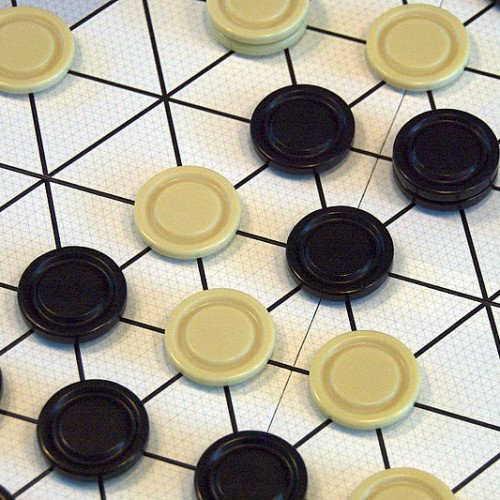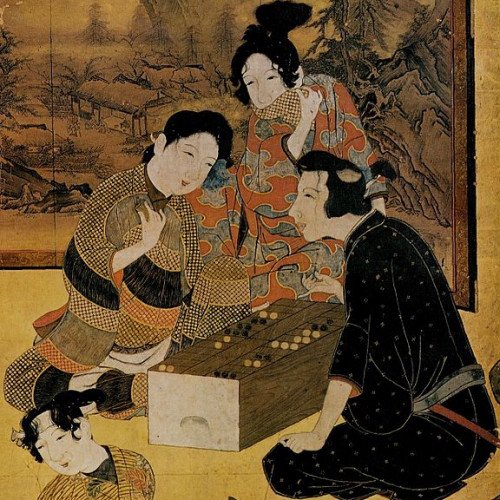GIPF VS SUGOROKU

GIPF
GIPF is an abstract strategy board game by Kris Burm, the first of six games in his series of games called the GIPF Project. GIPF was recommended by Spiel des Jahres in 1998. Players take turns pushing tokens (one player taking black, the other white) from the edge of the tri-gridded, hexagonal board, with pieces already in play pushed in front of the new placements rather than allowing more than one piece on any space. The game is lost if a player has no more tokens to play, and since each starts with a set number of tokens, it is clearly necessary to recycle pieces already positioned to keep playing. This is achieved by contriving to line up four pieces of the same colour in a row on the board, at which point those tokens are returned to their owner, and any opposing tokens extending from the line of four are captured. Because a single player will often move several pieces and change numerous on-board relationships, it is remarkably difficult to predict the state of the board more than one turn ahead, despite GIPF being a game of perfect information. Play tends to be highly fluid and there is no real concept of long term territorial or spatial development. The game can be expanded with extra pieces (available separately) called Potentials, which allow different kinds of moves to be made. These are named for the other games in the GIPF Project, though the other games are not actually necessary in order to utilise the Potentials named after them.
Statistics for this Xoptio

SUGOROKU
Sugoroku (雙六 or 双六) (literally 'double six') refers to two different forms of a Japanese board game: ban-sugoroku (盤双六, 'board-sugoroku') which is similar to western backgammon, and e-sugoroku (絵双六, 'picture-sugoroku') which is similar to western Snakes and Ladders. The game is thought to have been introduced from China (where it was known as Shuanglu) into Japan in the sixth century. It is known that in the centuries following the game's introduction into Japan it was made illegal several times, most prominently in 689 and 754. This is because the simple and luck-based nature of sugoroku made it an ideal gambling game. This version of sugoroku and records of playing for gambling continuously appeared until early Edo era. In early Edo-era, a new and quick gambling game called Chō-han (丁半) appeared and using sugoroku for gambling quickly dwindled. This variant of the backgammon family has died out in Japan and most other countries, with the Western style modern backgammon (with doubling-cube) having some avid players. A simpler e-sugoroku, with rules similar to snakes and ladders, appeared as early as late 13th century and was made popular due to the cheap and elaborate wooden block printing technology of the Edo period. Thousands of variations of boards were made with pictures and themes from religion, political, actors, and even adult material. In the Meiji and later periods, this variation of the game remained popular and was often included in child-oriented magazines. With ban-sugoroku being obsolete, today the word sugoroku almost always means e-sugoroku.